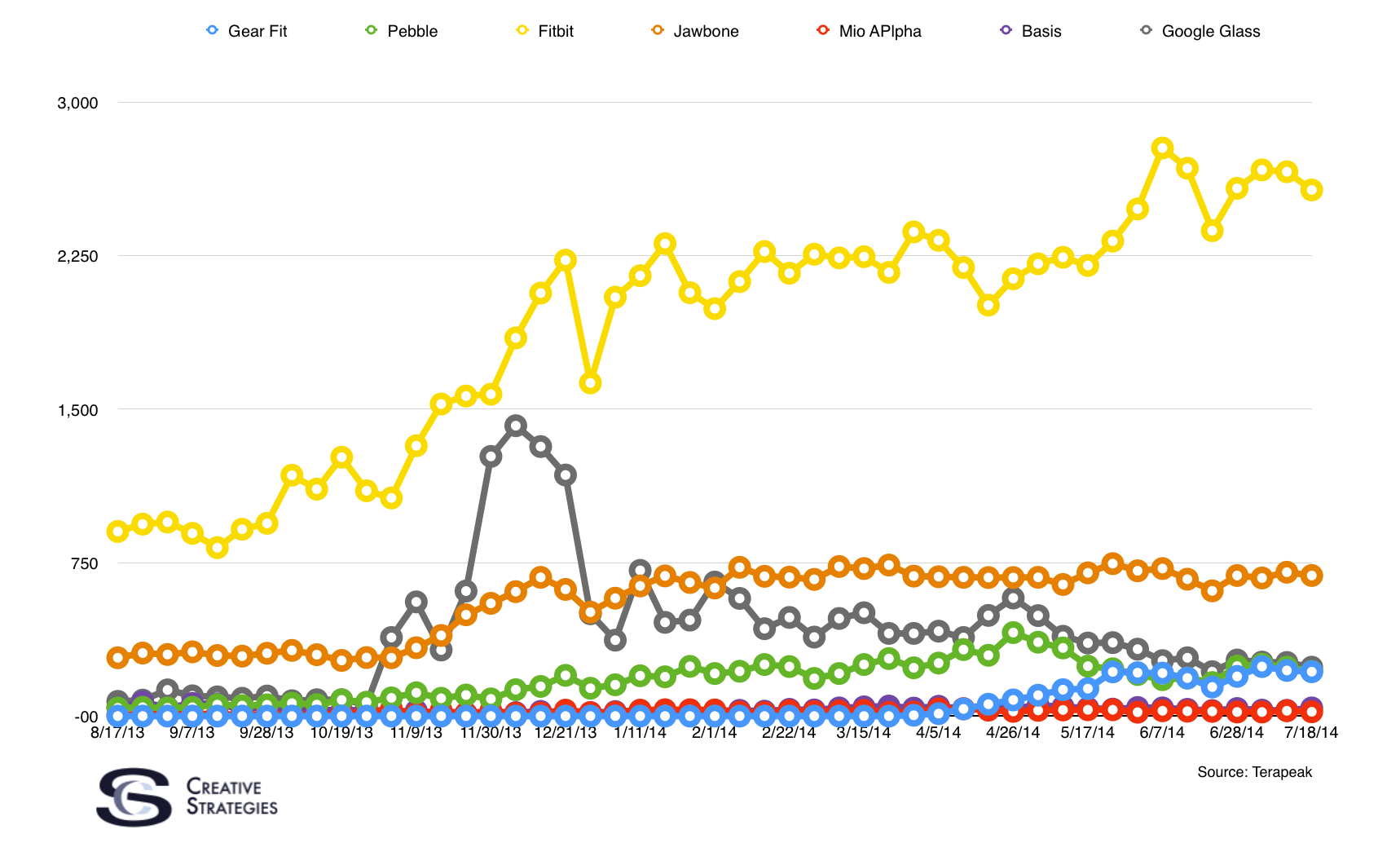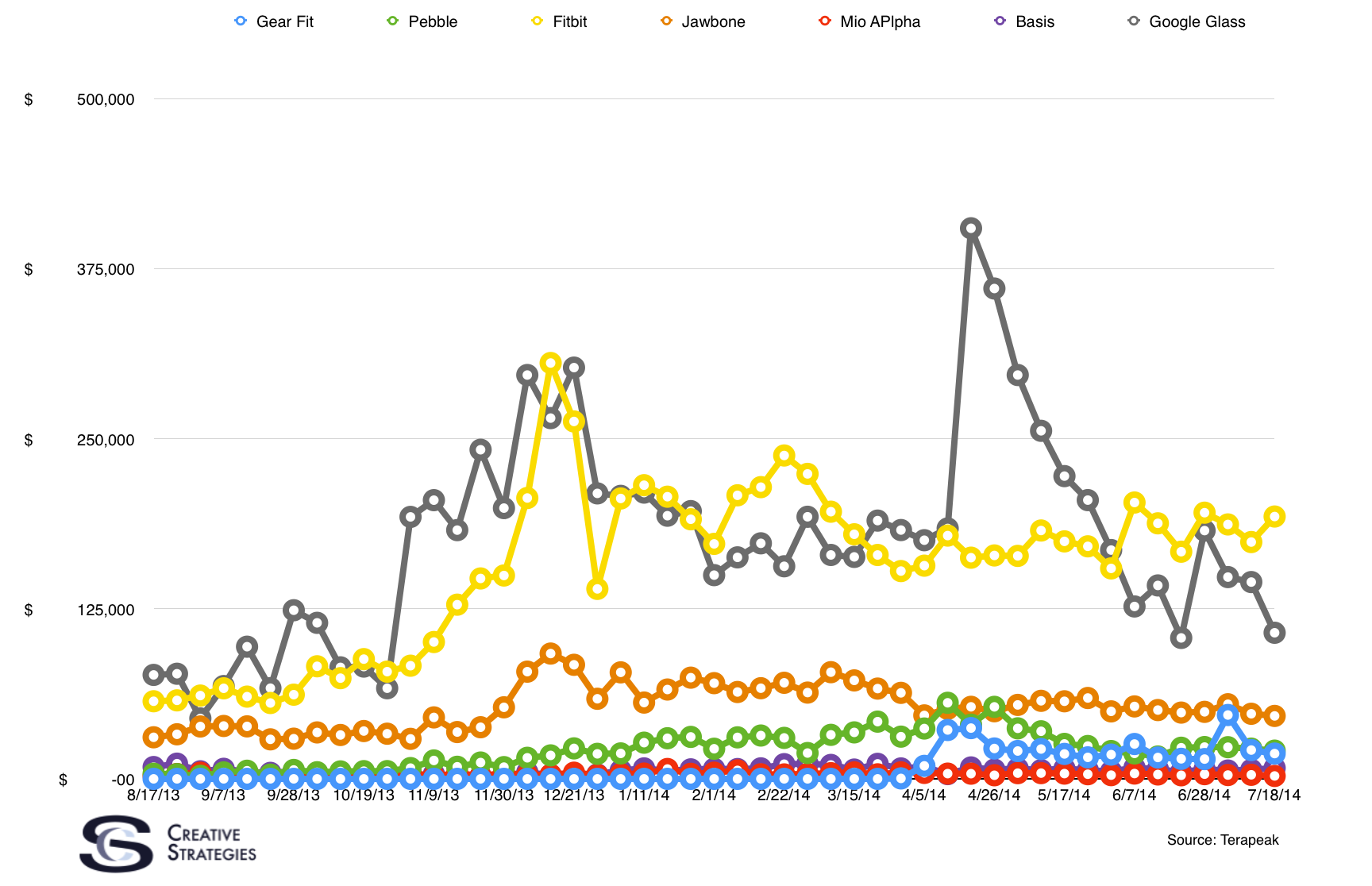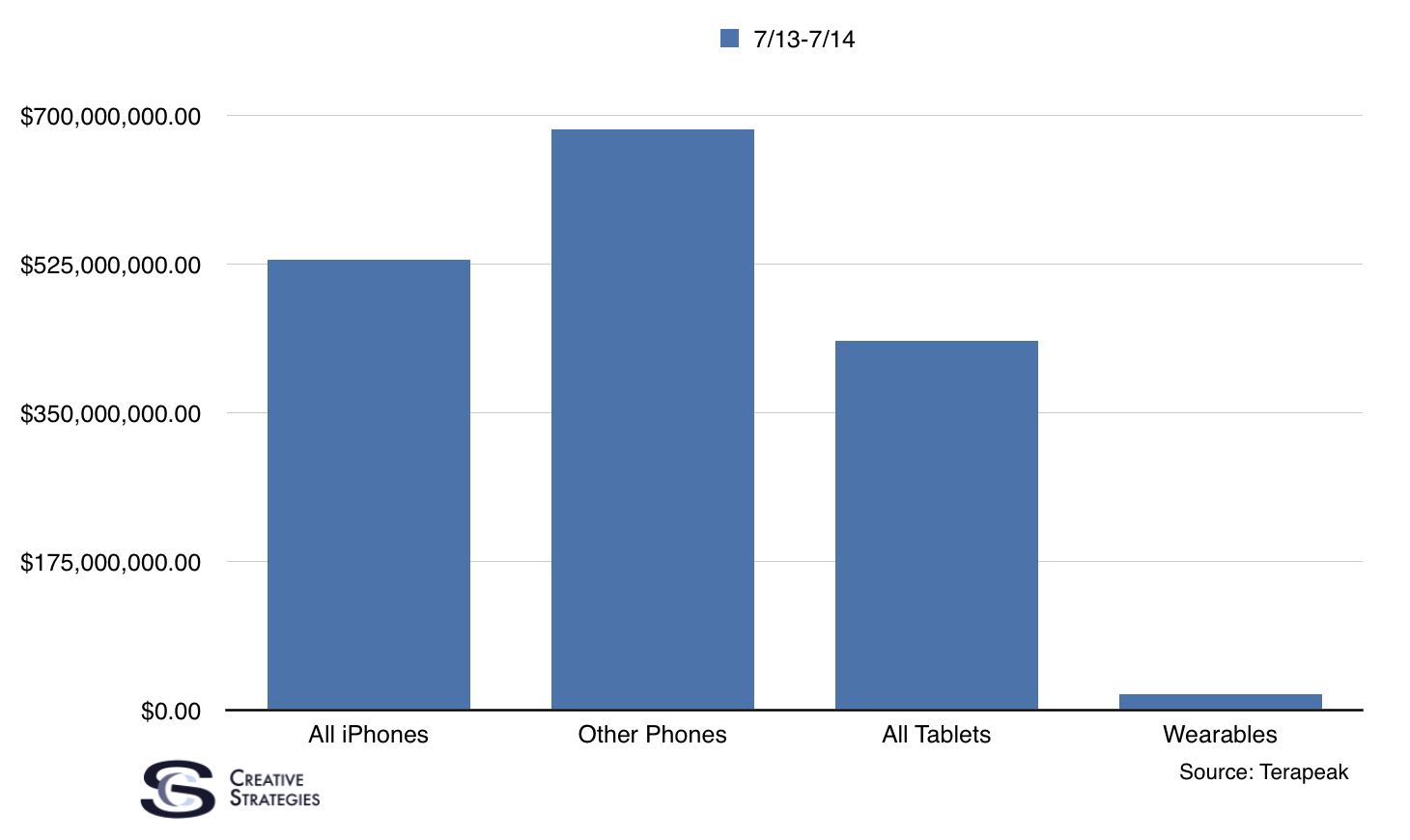I thought I would do something different and show some charts and let our readers help interpret them and share thoughts on what the data reveals. I found data from a service called Terapeak that provides a range of analytics for products on Amazon and eBay. Since Jan wrote a great article today on wearables, I thought it would be interesting to look at this data from eBay listings separated by product and revenue generated from each product from sales on eBay. Below are the charts and a few points on them.
Total Listings on eBay
This chart shows the total listings, over the past year, by a few select wearables and smart watches.

Fitbit has the largest number of listings of any of the devices by volume on eBay. There are a few other data points of interest to note with this chart with regard to new vs used listing for each device.
- Pebble = 30% of listings were used
- Samsung Gear Fit = 8% of listings were used
- Fitbit = 22% of listings were used
- Jawbone = 13% of listings were used
- Mio Alpha = 16% of listings were used
- Basis = 23% of listings were used
Total Money Made by Each Product
This chart shows the total volume in dollars made by each product over the past year.

Google Glass is the most expensive of all the products listed here so it should come as no surprise that it makes a good chunk of money from sales on eBay.
Comparing Categories
Just to add perspective, I’ve included the total sales on eBay of the past year’s iPhones, other mobile phones, and tablets.

Apparently, selling iPhones on eBay is a half a billion dollar per year enterprise.
Given Jan’s article, and what many others on this forum have shared about the challenge facing wearables, what observations stand out to you with these charts?

OK, I’ll get this started. It could tell me any of four things:
1. No one is making a wearable people (in any significant numbers) actually want.
2. Assuming #1 is wrong, people don’t know about these devices or know they exist.
3. Assuming something of interest can actually be created in this market that is compelling, it is ripe for disruption.
4. Wearables are a terrible idea that no one should waste their time and money creating beyond maybe a few niche markets that have always used dedicated wearables (such as scuba or sky diving).
In the arts we talk about needing to do two things to make a living in the arts: make great work, tell everyone about it. Seems in wearables everyone has failed at either or both of those things.
Joe
I’ll bite. There are two types of sellers of used products.
1. Those that who think the product was good and might be lazy or product doesn’t meet their lifestyle, but think others might want to buy the used product.
Fitbit
2. The product is bad and they want their money back, so they want to sell it ( or others don’t bother to try to sell it bc they don’t think anyone will pay decent money for it.)
Samsung Gear
The Samsung stuff is new, so how long will it get updates, compared to Fitbit where their product is their main business?
Hi Sam,
There may be something to what you say about used sellers, but if you look closely, the author mentions that only 22% of the FitBit products sold were used—so it would appear that there’s a healthy market for Fitbit products out there after all.
Believe it or not, eBay is a very strong marketplace for new gear as well.
Thank you for great content. I look forward to the continuation.
Good post! We will be linking to this particularly great post on our site. Keep up the great writing
You’re so awesome! I don’t believe I have read a single thing like that before. So great to find someone with some original thoughts on this topic.
Just want to say your article is as surprising. The clearness in your
post is just excellent and i could assume you are an expert on this subject.
Fine with your permission allow me to grab your RSS feed to keep up
to date with forthcoming post. Thanks a million and please continue the enjoyable work.
Heya i’m for the first time here. I came across this board and I
find It really useful & it helped me out a lot. I hope to give something
back and aid others like you helped me.
What a data of un-ambiguity and preserveness of precious knowledge about unexpected feelings.
Excellent goods from you, man. I have understand your stuff previous
to and you’re just extremely fantastic. I actually like what you have acquired
here, really like what you are stating and the way in which you say it.
You make it enjoyable and you still take care of to keep it sensible.
I can not wait to read much more from you. This is actually a tremendous site.